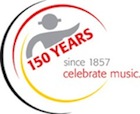Distortion
Hi there,
New to performing on stage and starting to think about mic options. Is it common practice to plug a harmonica mic into a distortion pedal like an electric guitar?
Matt:
As usual, Greg has nailed it.
I've played through three different mics of late: An vintage Shure with Controlled Reluctance element that's as old as I am; One of Greg's wooden mics with his "Heumann Element;" and a Shure SM57 he converted to high impedence. And I've played them through my own small tube amp and various vintage "refridgerators" other players have brought to our local jam. I've also played "acoustic" into a vocal mic. While other harp players have recognized that I'm using different gear, non-musician audiences don't know the differences between and among any combination of mic and amp. (Most just want to hear good blues, and be able to dance.)
Here's what makes a difference: Your body. Including your lips, tongue, mouth, throat, esophagus, and hands. (Re the latter, listen to the dynamics you can get by cupping a mic so that as little outside air as possible gets in. E.g., try cupping so tight that it's tough to draw any air through the harp into your lungs, and then opening your hands all the way to change the tone.
A while ago after playing a set at the local jam using just one of the vocal mics, a new player who'd been showing up asked to look at my harps - all pretty much out-of-the-box Hohners - and then asked if I and some of the other regular harp players had anything "special" done to them to get "that tone." This particular player, just starting out, had a very light, thin, brassy, tone. No real involvement of his body other than to blow air in and out. I counseled him to start thinking about how his own body made a harp sound good - not some special customization.
The most important things about a mic: (a) Is is comfortable in your hands? E.g., can you cup it easily, and not get tired of holding it? (b) Does it have sufficiant output (e.g., is its impedence matched to the amp's input, or to a DI input into the PA system)? (c) Is it dependable? (Nothing more embarrassing than wasting the other musicians' time trying to figure out why all of a sudden you favorite mic won't work)
Re (c), you can't can't any more dependable than a mic from Greg at BlowsMeAway.
If you can swing it -I promise it will be worth your while. This stuff is so much easier to demonstrate and show and hear than to describe in words!


Hi, Matt
It is absolutely NOT common practice!
However MANY new players (and I know because I was one of them) look to distortion pedals to try to get "that sound" when they're new. They discover quickly that distortion and overdrive pedals don't give them the sound they want, and create major feedback problems.
What you need:
A good mic
A good tube amplifier (or very good tube amp simulator pedal)
A lot of technique.
If you want “Crunch”, you have to PLAY crunchy. Crunch happens at the ATTACK (and often the method with which you STOP) the sound. If you play single notes, you will never get crunch. You must play chords. Any time you play 2 notes, a physical phenomenon called “difference tones” creates an additional bass note, considerably lower than the notes you’re playing. And it is the amp’s attempt to produce those bass notes that helps produce the distortion you crave. Side leaks (letting just a little of the adjacent hole sound), tongue slaps, pulls, splits, octaves, head shakes all (at least momentarily) sound multiple notes and deliver crunch.
You ALSO need to learn to cup the mic and harp effectively. If you're taking lessons from Dave, he can show you this in person. If you're not but are in northern CA and feel like coming to geyserville I can help you with it too.